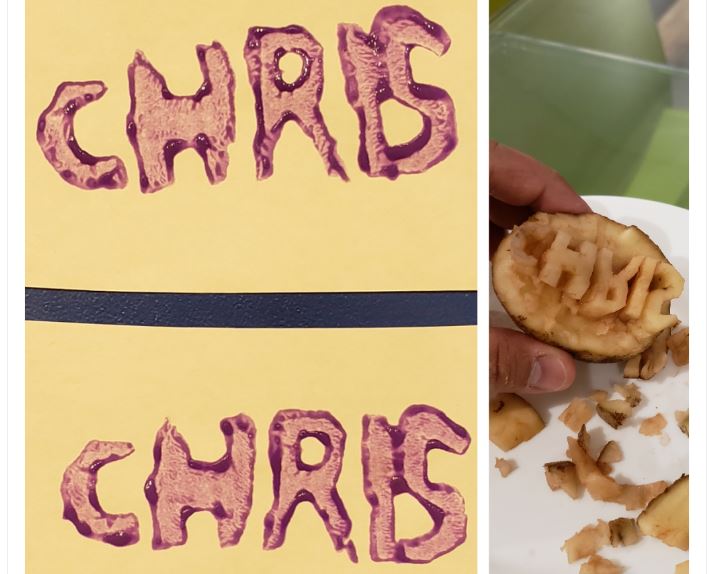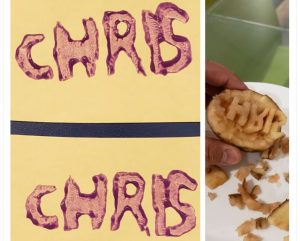Link #2: Potato Printing
Link #2: Potato Printing Task – Christopher Lam
Christopher’s experience with the potato printing task differed quite a bit from my own. The post shares that he carved his 5 letter word into a block carving in his potato. Comparatively, I divided my potato into 5 sections or rounds, if you will, and then proceeded to make a stamp with each of the rounds. In the end, CL seemed to have spent more time carving his potato, and with more challenges along the way; however, his stamp proved to be significantly superior to mine being able to recreate his word with ease. When comparing the images of our potato printer, it is obvious his stamp has a much higher ability to recreate an identical match then my individual stamps.
He used UBC blogs to manifest his work.
Christopher’s blog site has some similarities to mine. His home page, which is also his only page (at this point in the course), shows all his blog posts in order from his latest post first, to his oldest post. His post squares identify the title and allow the reader so see the first sentence of the post. Each of these posts includes the date of publishing and the number of comments on each blog post, something mine does not include. Christopher’s blog site is very simple and straight forward to use. When a blog is selected, instead of any menu’s allowing the reader to select different areas of the site there are only arrows directing the reader left (newer posts) or right (older posts).
The literacies of Christopher’s blog site privileges the reader to a very simple platform, however with very knowledge, real and deep motif’s found within each post. The simplicity of this site relates directly to Christopher’s first blog post explaining the contents of his bag. It was an in-depth exploration of the simple items of his pants pockets. It is obvious in the Potato Printer, the high quality of the work found within the simple stamp of CHRIS.
This blog does not include multiple pages, other than the “home” page, at this point in time. Posts accumulate on the main page with only a left or right option that appears when in a blog post in order to move to the next post. Christopher has also made the conscious choice to not title his posts with the task number, and some are without the word “Task” in the title altogether. I think this choice is interesting because it requires higher diligence in titling the post to make sure it can be connected easily back into the course material. Without the use of menus, it makes the experience of the week feel isolating without any reference to other posts, pages, or information about the author or the blog.
Because the course content each week changes, and yet builds from the previous week I have consciously tried to make my blog site easily accessible to all the content, similar to how Christopher has set up his home page. With future planning in mind knowing that I will be including this linking assignment and eventually my final project, I also thought it to be important to have individual pages for each of these, which is why I have all the links of my weekly tasks on a Weekly Task page.

